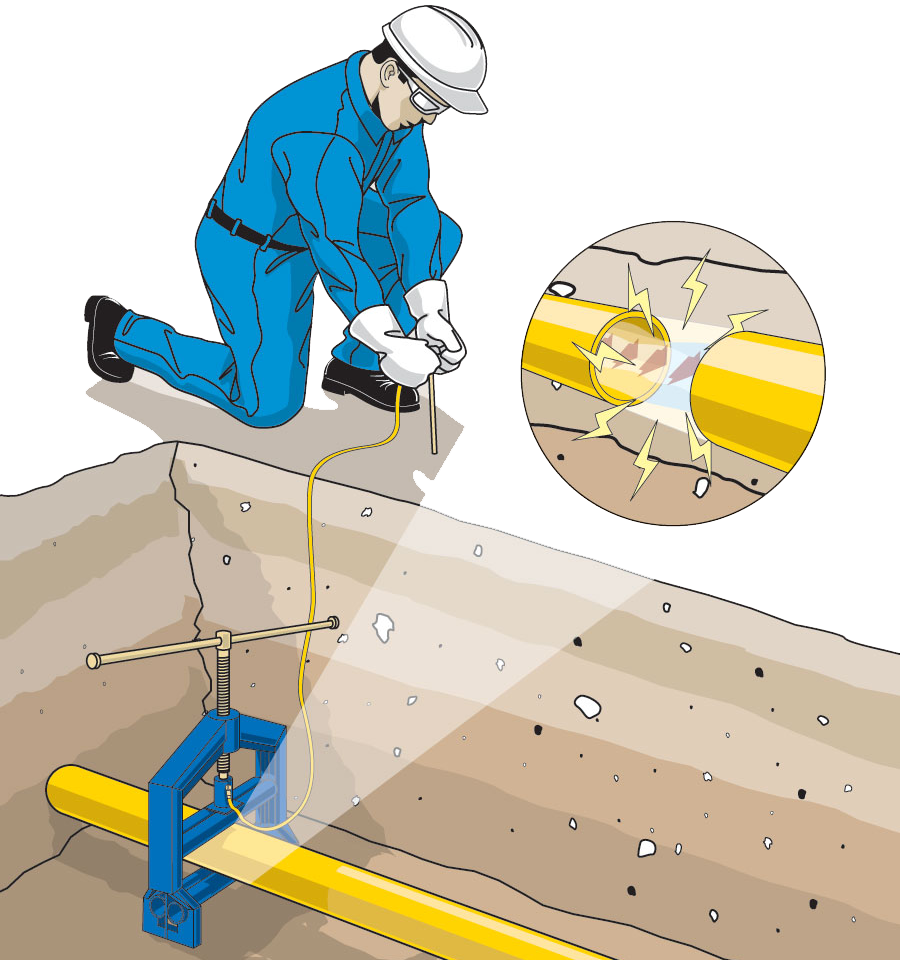Electrostatic Discharge
Polyethylene plastic used in manufacturing gas pipe has many advantages over steel and other materials. However, one disadvantage is the potentially dangerous electrostatic buildup caused by gas flowing through this non-conductive material.
The possibility of static electric discharge during squeeze-off of PE gas pipe is now recognized and addressed by gas utilities and pipe manufacturers. During the normal flow of natural gas in PE pipe, electric charges move in the direction of the gas. When squeeze-off occurs, turbulence and gas velocity increase at the squeeze point, which causes the charges to become heavily concentrated at that same point. As the charge increases in density on the inside wall surface, the force between the charges inside the pipe and the opposing charges outside the pipe increase. When the force exceeds the dielectric strength of the pipe, the charge will seek a path to ground. If no safe path is provided, a dangerous spark may occur. Properly grounding the tool is critical to allowing any built up charge to pass and preventing a possible ignition of any residual gas present. Mustang recommends that all tools used on PE pipe be grounded.
* It is important to note that a static charge may exist on both the inside and outside of the pipe. Please review the Mustang training video, available on YouTube, for procedure recommendations and/or follow your company’s specific procedures.
This phenomenon is aggravated by:
1. Sufficient gas flow to cause extensive turbulence, such as the reduced area of pipe during squeeze-off.
2. Rust or foreign particles present in the gas.


